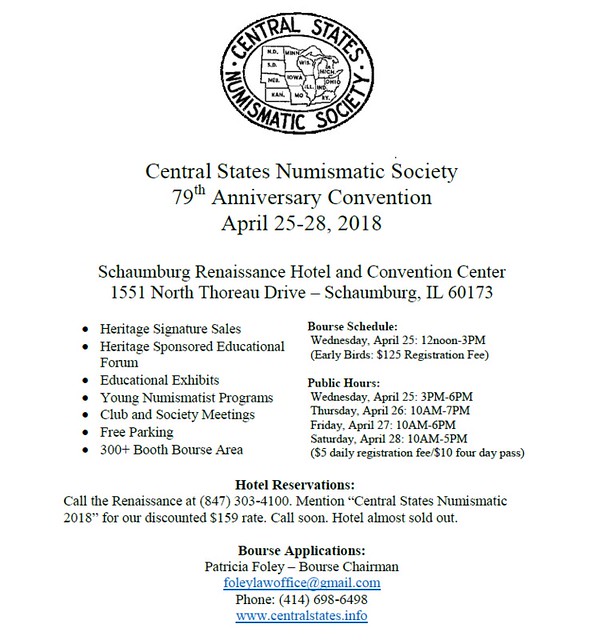
PREV ARTICLE
NEXT ARTICLE
FULL ISSUE
PREV FULL ISSUE
VOCABULARY TERM: BULLION
Dick Johnson submitted this important entry from his Encyclopedia of Coin and Medal Terminology. Thanks!
-Editor
Bullion. Metal with all impurities removed; usually in ingot form and prior to any step of manufacturing. Bullion may be any metal, notably in pure form, but is often considered as precious metal only. The metal for all coins and medals must at some prior time have been in bullion form. Makeup of the composition for intended coinage metal, called FORMULATION, may include some form of alloyed metal – as previous coins melted for reuse, or some form of scrap metal – or it may be virgin metal (as direct from the refinery). Any of this metal may be called “bullion.” Refinery bullion. Refineries prepare metal by purifying it, separating if from other metals or mixing it to a needed formulation. Virgin metal is never pure when it comes from ore, nature has a way of mingling metals in their natural state. Man’s task is to separate these. Metal derived from ore is first granulated then treated by a variety of physical and chemical processes. After purification the molten metal is poured into molds and allowed to cool. These cooled ingots are cleaned of surface impurities (wire brushed or filed) if necessary and marked in some way. Most ingots are marked with a PUNCH or punches to identify the refiner, the weight, the purity, any marks the refiner wants to identify that ingot (as perhaps, a serial number or melt number). Ingots can then be stored, shipped, transferred to another operation (as rolling mills, wire mills, tube mills or however the metal is to be fabricated). For coinage metals bullion ingots are shipped to a mint. Coinage bullion. When preparing for a coinage metal, bullion is ASSAYED for precious metals or analyzed for base metals to determine its exact metal content. It is then combined by precise weight to form the required metal ALLOY composition. For precious metal coins – gold, silver, platinum – these assays are very precise to meet the exact requirements for coin metal standard (FINENESS), usually prescribed by law. For other alloys, particularly base metals, as bronze and zinc, there may be more leeway, called TOLERANCE. This formulated mixture is melted (in a mint’s melt shop) and agitated to form a homogeneous new alloy. The molten metal is poured into molds (open or book molds) to cool forming ingots, sometimes called fillets. These ingots are surface wire brushed to remove the burrs, then swaged (end flattened) to be able to feed them into a ROLLING MILL to be rolled into strips. A physical imperfection in the bullion at this time is not serious (since the physical form will change); a chemical imperfection in the bullion, however, is serious as it may continue through rolling and blanking, and even into the final pieces after striking. See INGOT. Bullion that is incorrectly formulated is called BULLION BLUNDER. It may have a slight color variation but this error is very difficult to discern unless a chemical analysis is made. Alloyed metal that is not blended correctly is called INHOMOGENEITY; such metal may display off color streaks in strips, blanks or even struck coins. Ownership of bullion has become popular with the public, specifically for investment. In small amounts this desire has been fulfilled by the manufacture of BULLION COINS, BULLION MEDALS and COINED INGOTS. These are sold to investors who like to take physical possession of the pieces themselves. Even national mints have struck bullion coins and medals to meet this demand, first supplied by gold Krugerrands from the South African Mint beginning in 1967. The appeal of diestruck bullion pieces – coins, medals or ingots – is their guarantee of purity, their convenient form for any transaction, and their convenient size, in fractions or multiples of an ounce. Both buyers and sellers are willing to accept the standards usually stated on the piece. It is not necessary to assay such coined bullion pieces for purity and weigh at every transaction. Those facts are stated right on the piece.
The easy availability for more than a century of bullion from metal suppliers has eliminated the custom of jewelers and craftsmen from melting coins as a source of their metal. Silver, for example can be obtained as fine silver (.999), STERLING SILVER (.925), COIN SILVER (.900) or any specialty
alloy.
REFERENCES: Looking for the meaning of a numismatic word, or the description of a term? Try the Newman Numismatic Portal's Numismatic Dictionary at: https://nnp.wustl.edu/library/dictionary 
Wayne Homren, Editor The Numismatic Bibliomania Society is a non-profit organization promoting numismatic literature. See our web site at coinbooks.org. To submit items for publication in The E-Sylum, write to the Editor at this address: whomren@gmail.com To subscribe go to: https://my.binhost.com/lists/listinfo/esylum All Rights Reserved. NBS Home Page Contact the NBS webmaster 
|